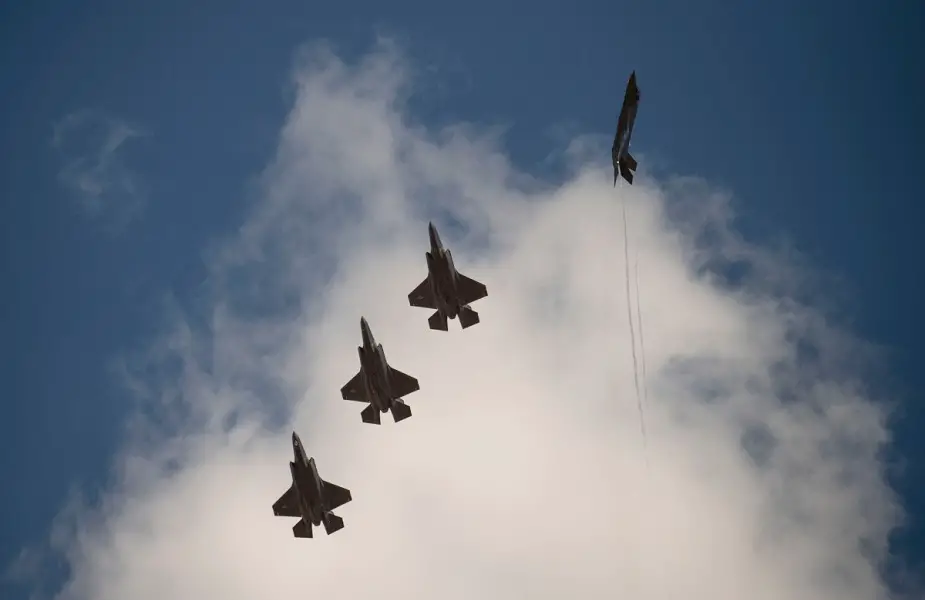The Tactical Leadership Programme (TLP) has conducted their third flying course in 2023 with personnel from Belgium, Denmark, France, Spain and the United States; one major aspect was the continued integration of modern 5th generation fighter aircraft in common tactics, techniques and procedures.
Follow Air Recognition on Google News at this link
 The Tactical Leadership Programme's Flying Course started on September 12. Almost three dozen 4th and 5th generation fighter jets were used to plan, prepare and conduct multinational Composite Air Operations honing air and ground crews' common tactics, techniques and procedures (Picture source: Peter van Bastelaa)
The Tactical Leadership Programme's Flying Course started on September 12. Almost three dozen 4th and 5th generation fighter jets were used to plan, prepare and conduct multinational Composite Air Operations honing air and ground crews' common tactics, techniques and procedures (Picture source: Peter van Bastelaa)
Flying Course (FC 2022-3) started on September 12 and runs through September 30. Some 700 participants including 32 pilots, intelligence officers and air traffic controllers who will graduate at the end of the course. After a week of dedicated academic activities and simulator flights, the participants began the live-fly phase.
Fighter jets will be flying “blue” force versus “red” force manoeuvres applying Composite Air Operations (COMAO) procedures. In total, 24 blue force planes – F-35, F-15E, F-16, F-18D/E and Eurofighter aircraft – acted as the defensive force and conducted planned aerial missions against 10 red force aircraft; some of the missions were supported by a French MQ-9 Reaper remotely piloted aircraft.
“The participation of the F-35 is key in this course to get good lessons learned on the process of integration of 4th and 5th Generation platforms, the first pillar of the TLP Strategy,” said the TLP Commandant Colonel Alberto Martínez.
A French Airborne Warning and Control System (AWACS) platform flying in from Avord Air Base in France provided battle management and fighter control for the TLP Flying Course missions. Belgian Survival, Evasion, Resistance and Extraction (SERE) instructors and Italian Joint Terminal Attack Controllers were also involved on the ground during the Flying Course.
Spain contributed an NH-90 helicopter and a C-295 tactical transport aircraft, in support of two missions and Army and Spanish NASAMS and MISTRAL systems. Together with other ground-based air defence systems from the POLYGONE Multinational Aircrew Electronic Warfare Tactics Facility located in Germany, these assets helped simulate a complex threat environment during for the multinational activities.
“TLP Flying Courses aim to improve the tactical leadership skills and flying capabilities of front-line fighter Mission Commanders, to further improve the tactical interoperability of NATO Air Forces through exposure to tactics and capabilities of other Air Forces,” said Colonel Martínez. “The course also enables exchange of information on weapons, tactics and capabilities among the participating Nations. By providing an environment that encourages the discussion and development of multinational tactics, participants find the best way to employ the differing aircraft capabilities of the multi-national forces in Composite Air Operations,” he concluded.
 Some 700 participants including 32 pilots, intelligence officers and air traffic controllers who will graduate at the end of the course. After a week of dedicated academic activities and simulator flights, the participants began the live-fly phase (Picture source: Peter van Bastelaa)
Some 700 participants including 32 pilots, intelligence officers and air traffic controllers who will graduate at the end of the course. After a week of dedicated academic activities and simulator flights, the participants began the live-fly phase (Picture source: Peter van Bastelaa)
















